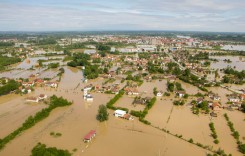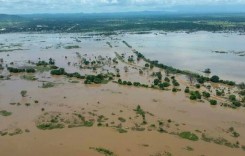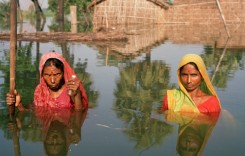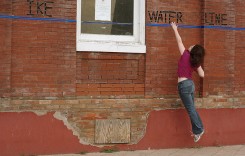
The floods in Mozambique took place in the early months of 2000. Over the course of February and March, large parts of Africa experienced incredibly heavy rainfall. Flooding was soon all over the country, and because of the relentless rain, eight hundred people lost their lives. The damages were immense, with lost land and homes all over the country. The flooding was said to be the worst the country had suffered in fifty years.
The rainfall started on the 8th February 2000, but was not just in Mozambique. Other countries were also affected, including Swaziland and Botswana. However, it was Mozambique that was hit the worst. In the first few days, the capital city was drowning in water. But the rainfall did not cease. The rivers that ran down into the valleys were surging with water. On the 11th February, the Limpopo River overflowed, flooding villages for miles around. The Limpopo Valley suffered massive losses and damages, and disease spread through the people who were affected. Dysentery was rife. Over the space of three days, the country had experienced seventy five per cent of its year’s rainfall.
Still, the weather continued to batter the country. On the 22nd of the month, the coastal town of Beira was hit by an enormous cyclone. The cyclone (named Leon-Eline) caused further damage, especially from flash floods. Farms and arable land were completely submerged in the towns of Xai-Xai and Chokwe.
People were forced out of their homes, and had to climb onto roofs and into trees in the hope that they would be rescued. Over five hundred thousand people were saved this way as the waters continued to rise. The first on scene were the Navy ships. However, as more and more people were affected, the South African government sent helicopters. One woman was even forced to give birth in one of the trees, but was luckily saved by the air force.
However, despite the rescues, the government response and international aid was slow to reach the country. It was almost three weeks after the start of the flooding that rescue supplies and tools finally arrived from Western countries. The rainfall continued to hit the country for five weeks.
The damage was colossal, and the areas affected were almost completely destroyed. Farmland and crops which villages relied on for survival were submerged in the waters. Many families were totally stranded with no food or clean water, so hundreds died from starvation, and over forty health stations were completely destroyed, including the second largest in Mozambique. Irrigation systems all over the country were ruined, which was one of the main reasons for the loss to agriculture. Over one hundred thousand farming families had lost their livelihoods, with nearly fifteen hundred square kilometres of land almost destroyed. But it was not only the crops that were damaged. Twenty thousand cows were either swept away by the flood waters, or died from disease shortly afterwards. In the aftermath, four hundred and fifty million dollars was required to rebuild after all the damage.









Troy
- Edit
I don’t remember hearing about this flood. Sounded like one of the worst around.
ashaeljeck
- Edit
so sad